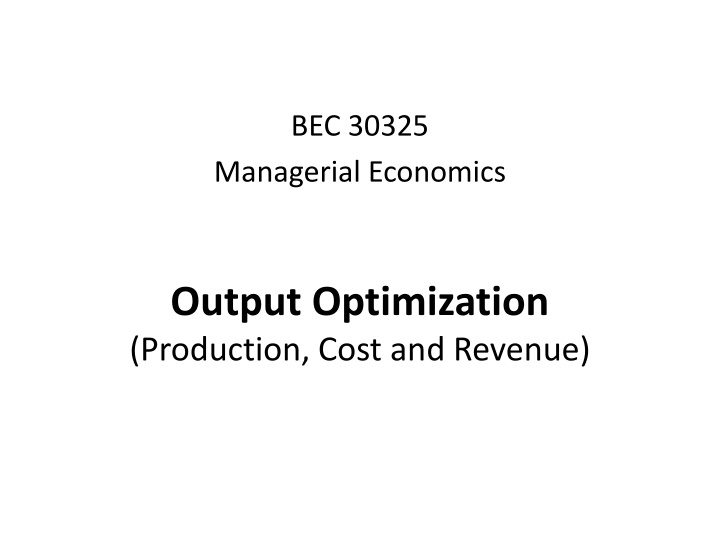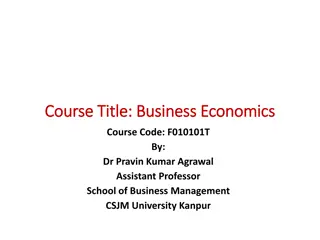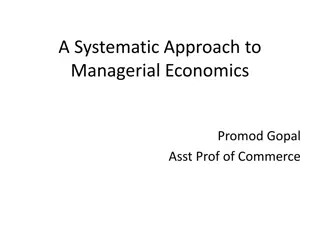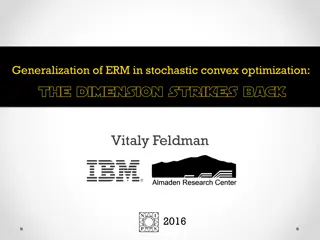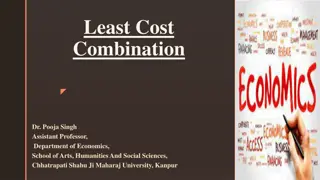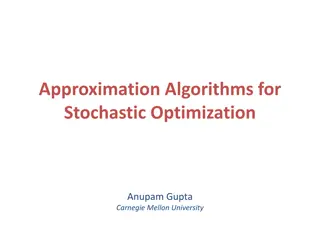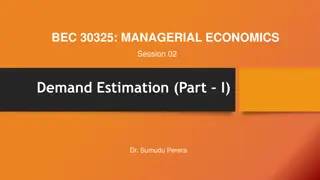Output Optimization in Managerial Economics
Determining the optimal use of variable input in production by analyzing marginal revenue product (MRP) and marginal factor cost (MFC). Learn how to maximize profits through understanding cost, revenue, and output relationships in economic decision-making. Explore a practical example using a cubic function in a short-run production setting.
Download Presentation

Please find below an Image/Link to download the presentation.
The content on the website is provided AS IS for your information and personal use only. It may not be sold, licensed, or shared on other websites without obtaining consent from the author.If you encounter any issues during the download, it is possible that the publisher has removed the file from their server.
You are allowed to download the files provided on this website for personal or commercial use, subject to the condition that they are used lawfully. All files are the property of their respective owners.
The content on the website is provided AS IS for your information and personal use only. It may not be sold, licensed, or shared on other websites without obtaining consent from the author.
E N D
Presentation Transcript
BEC 30325 Managerial Economics Output Optimization (Production, Cost and Revenue)
Determining the optimal use of the variable input Assuming that the capital input, or indeed any input in general terms, is fixed, a firm can determine the optimal amount of the variable input. This involves an explanation of the concepts of marginal revenue product (MRP) and marginal factor cost (MFC). 2
Marginal Revenue Product (MRP) The addition to total revenue from using an additional unit of the variable factor, ????= ? This change in total revenue equals the marginal product of labour times the marginal revenue from selling the additional units of output. ????= ??? ? ??? 3
Marginal Factor Cost (MFC) The addition to total cost from using an additional unit of the variable factor. ? ? ????= The optimal level of input use is given by the condition; ????= ???? 4
An example: The given is the cubic function relating to a company that makes shoes. The outputs, measured in pairs of shoes produced per week, are rounded to the nearest unit. ? = 4?? + 0.1?2? + 0.2??2 0.04?3? 0.02??3 If capital input is fixed at three (03) machines; Cubic form for the short-run production function ? = 13.26? + 0.3?2 0.12?3 5
Contd Marginal product ?? = 13.26 + 0.6? 0.36?2 Average product ?? = 13.26 + 0.3? 0.12?2 Assume the cost of capital per machine is $500 and cost of labour per week (wages per worker) is $400. Selling price of a pair of shoes is $75. Profit function ? =????????? 6
Contd The optimal value of L (profit maximizing) can be calculated by differentiating the profit function with respect to L; ?? ??= 0 Expression requires solving a quadratic equation; ??2+ ?? + ? = 0 ? = ? ?2 4?? 2? 7
Increasing and Diminishing Returns Stage 2 Stage 1 Ep>1 Stage 3 Ep<0 0<Ep<1 TP Q Stage 1: average product rising. Stage 2: average product declining (but marginal product positive). Stage 3: marginal product is negative, or total product is declining. Pt of Marginal Returns Ep=0 TP Ep=1 Increasing Returns Negative Returns Decreasing Returns L1 L2 L3 L AP,M P AP L1 L2 L3 L MP
Returns to Scale An increase in scale involves a proportionate increase in all the inputs of the firm. The resulting proportionate increase in output determines the physical returns to scale for the firm. 10
Types of Returns to Scale Constant returns to scale (CRTS) This refers to the situation where an increase in inputs results in an exactly proportional increase in output. Increasing returns to scale (IRTS) This refers to the situation where an increase in inputs results in a more-than-proportional increase in output. Decreasing returns to scale (DRTS) This refers to the situation where an increase in inputs results in a less-than-proportional increase in output. 12
Economies of Scale Economies of scale (EOS) can be defined as aspects of increasing scale that lead to falling long-run unit costs. Internal economies arise from the growth of the firm itself In this sense they are controllable and under the influence of management decision-making. External economies arise from the growth of the industry, and are independent of the size of the firm. They are therefore further removed from managerial decision-making, though not entirely so; location decisions in particular may depend on these economies 13
Technical Economies These arise mainly from increased specialization and indivisibilities. Managerial Economies Large firms find it easier to attract and use more specialized managers, who are more skilled and productive at performing specific managerial functions 14
Marketing Economies These relate mainly in obtaining bulk discounts and advertising economies. Financial Economies Large firms can often borrow at a lower interest rate, because they have a better credit rating, representing a lower default premium. 15
Diseconomies of Scale Diseconomies of scale (DOS) are aspects of increasing scale that lead to rising long-run unit costs. Again they can be internal or external, physical or monetary, and can arise at the level of product, plant or firm. Technical, managerial, marketing and financial diseconomies. 16
Economies of Scope Economies of scope occur when changing the mix of operations has cost benefits. Ex: Producing 100,000 units of product X may involve a unit cost of $100 if X is produced by itself; but if 100,000 units of X are produced along with a quantity of product Y, then the unit cost of producing X may fall. There are two (02) main causes of this. The products may use common processing facilities; for example, different car models being produced at the same plant. There may be cost complementarity, especially when there are joint products or by-products, for example petrochemicals 17
Short-run and long-run average cost functions in the absence of EOS and DOS 18
Short-run and long-run average cost functions with EOS and DOS 19
